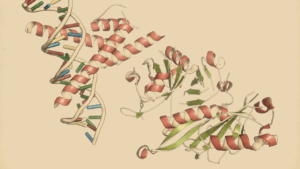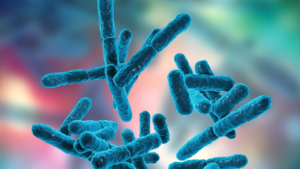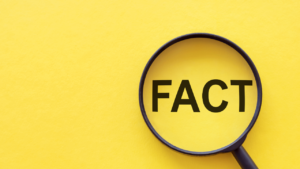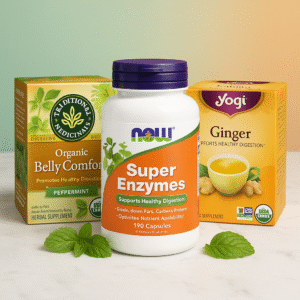Harnessing Probiotic Strains: The Future of Intestinal Epithelium Health
Discover the potential of probiotic strains and their strains in promoting intestinal epithelium health. Explore the future of gut health with science-backed insights.
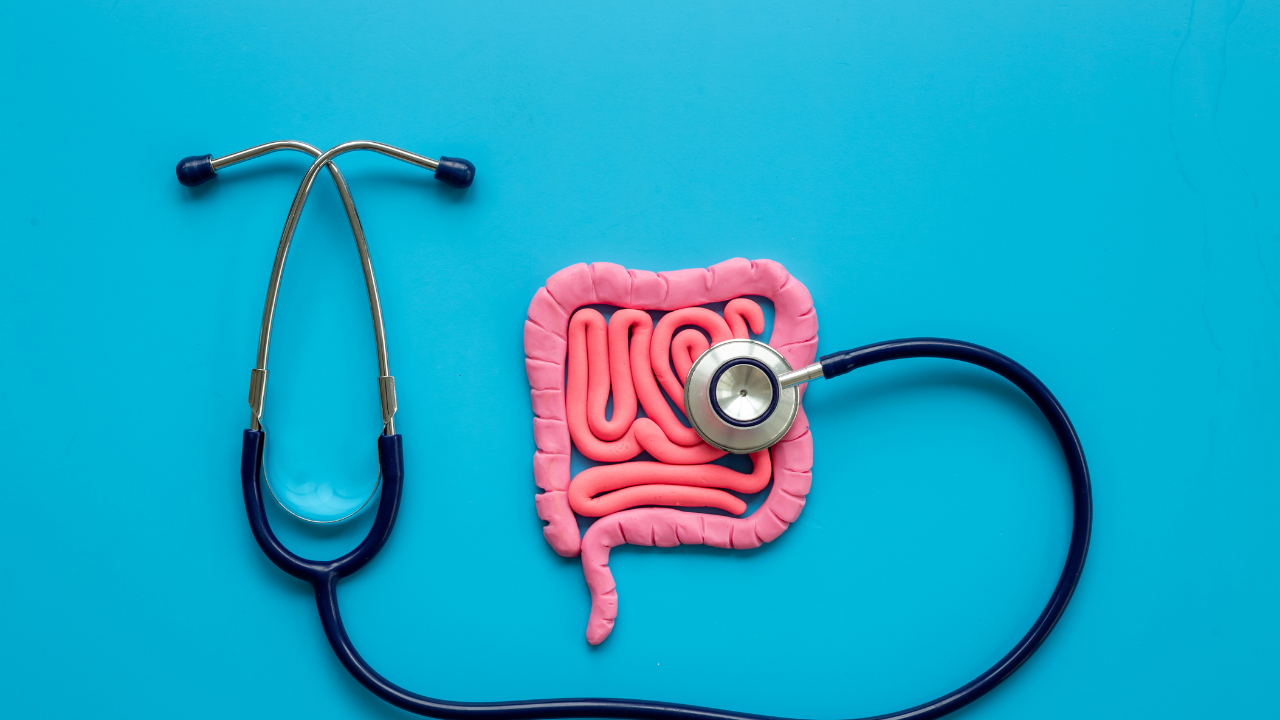
Key Points
- Probiotics and Intestinal Protection: Probiotic strains have been shown to protect the intestinal epithelium and, in certain cases, can reverse damage caused by antibiotics.
- Criteria for Effective Probiotics: A genuine probiotic must meet specific criteria set by the FAO/WHO, including being live microorganisms that confer a health benefit, proper genetic identification, and being subjected to appropriately designed studies for the target host (e.g., humans, animals).
- Misuse of the Probiotic Term: With the rapid discoveries in microbiome science, there's a risk of mislabeling any beneficial microbe as "probiotic." Strict adherence to the exact definition and requirements of probiotics is crucial to avoid misinformation.
- Guidance for Physicians: Physicians should be guided by key elements when evaluating probiotics. These elements include evidence from human trials, dosage and viability equivalence to the human trial, and comprehensive genome characterization.
- Future of Microbial Interventions: The velocity of microbiome research has been amplified by projects like the Human Microbiome Project. This wave of discovery offers promising preventive and therapeutic interventions for various diseases, but it's essential to avoid "overselling" limited findings and ensure that the probiotic term is used correctly.
In This Article:
Introduction
In recent years, the world of health and medicine has seen a surge in interest surrounding the multifaceted roles of probiotics.

Beyond their traditional association with fermented foods and digestion, these live microorganisms have demonstrated promising therapeutic benefits across a myriad of health domains.
Among these revelations, one of the most exciting pertains to the health of the intestinal epithelium.
As the barrier between our gut and the rest of the body, the intestinal epithelium plays a critical role in nutrient absorption, immune response, and overall gut health.
This article delves deep into the potent potential of specific probiotic strains in maintaining, and in some cases, rejuvenating this crucial protective layer.
Through cutting-edge research and expert insights, we will explore how harnessing the power of these beneficial bacteria can shape the future of intestinal health and pave the way for innovative treatments and preventative strategies.
Unraveling Probiotics: Defining Their Impact on Health
In 2001, a panel, endorsed by the Food and Agriculture Organization of the United Nations and the World Health Organization, set out to redefine probiotics.
They described probiotics as "Live microorganisms that, when administered in sufficient quantities, provide health benefits to the host" . A Trusted Source FAO/WHO (2002). Guidelines for the Evaluation of Probiotics in Food. Available At: https://www.who.int/foodsafety/fs_management/en/probiotic_guidelines.pdf Google Scholar
In 2014, a consensus panel made a minor edit, changing "which" to "that" in the definition. A Trusted Source Hill, C., Guarner, F., Reid, G., Gibson, G. R., Merenstein, D., Pot, B., et al. (2014). The International Scientific Association for Probiotics and Prebiotics consensus statement on the scope and appropriate use of the term probiotics. Nat. Rev. Gastroenterol. Hepatol. 11, 506–514. doi: 10.1038/nrgastro.2014.66 PubMed Abstract | CrossRef Full Text | Google Scholar
Since 2001, scientific interest in probiotics has surged. By February 11, 2019, there were 20,315 research papers related to "probiotic," compared to just 760 before 2001.
Commercially, probiotics generate over $40 billion in sales, with projections exceeding $64 billion by 2023. A Trusted Source Global Market Insights (2016). Probiotics Market Size to Exceed USD 64 Billion by 2023: Global Market Insights Inc. Available at: https://www.prnewswire.com/news-releases/probiotics-market-size-to-exceed-usd-64-billion-by-2023-global-market-insights-inc-578769201.html Google Scholar
Probiotics represent microbiology's potential for human and animal health. Yet, confusion persists regarding what qualifies as a probiotic.
To address this, guidelines require microbial strain identification and human studies.
Inconsistent usage has fueled skepticism.
Probiotic Strains: Separating Fact from Fiction in Health Research
A recent study by Bae (2018) has drawn attention to the use of probiotics in preventing traveler's diarrhea (TD).
While the study suggests that probiotics are effective, a closer examination reveals that it included a study using non-live lactobacilli and two others with prebiotics. A Trusted Source FAO/WHO (2002). Guidelines for the Evaluation of Probiotics in Food. Available At: https://www.who.int/foodsafety/fs_management/en/probiotic_guidelines.pdf Google Scholar A Trusted Source Sanders, M. E., Hamilton, J., Reid, G., and Gibson, G. (2007). A nonviable preparation of Lactobacillus acidophilus is not a probiotic. Clin. Infect. Dis. 44:886. PubMed Abstract | Google Scholar
Probiotics must be live cultures, and prebiotics are different. A Trusted Source Gibson, G. R., Hutkins, R., Sanders, M. E., Prescott, S., Reimer, R., Salminen, S., et al. (2017). Expert consensus document: the International Scientific Association for Probiotics and Prebiotics (ISAPP) consensus statement on the term and scope of prebiotics. Nat. Rev. Gastroenterol. Hepatol. 14, 1–12. doi: 10.1038/nrgastro.2017.75 PubMed Abstract | CrossRef Full Text | Google Scholar
Misinterpretation is not limited to meta-analyses.
Some studies draw broad conclusions from limited data.
For example, a study on probiotics and acute pancreatitis suggested harm, but it lacked direct evidence. A Trusted Source Besselink, M. G., Timmerman, H. M., Buskens, E., Nieuwenhuijs, V. B., Akkermans, L. M., Gooszen, H. G., et al. (2004). Probiotic prophylaxis in patients with predicted severe acute pancreatitis (PROPATRIA): design and rationale of a double-blind, placebo-controlled randomised multicenter trial [ISRCTN38327949]. BMC Surg. 4:12. doi: 10.1186/1471-2482-4-12 PubMed Abstract | CrossRef Full Text | Google Scholar A Trusted Source Besselink, M. G., van Santvoort, H. C., Renooij, W., de Smet, M. B., Boermeester, M. A., Fischer, K., et al. (2009). Intestinal barrier dysfunction in a randomized trial of a specific probiotic composition in acute pancreatitis. Ann. Surg. 250, 712–719. doi: 10.1097/SLA.0b013e3181bce5bd PubMed Abstract | CrossRef Full Text | Google Scholar A Trusted Source Reid, G., Gibson, G., Sanders, M. E., Guarner, F., and Versalovic, J. (2008). Probiotic prophylaxis in predicted severe acute pancreatitis. Lancet 372, 112–113. doi: 10.1016/S0140-6736(08)61024-7 CrossRef Full Text | Google Scholar

Later research clarified that probiotics were not contraindicated, and issues were linked to lactic acidosis. A Trusted Source Bongaerts, G. P., and Severijnen, R. S. (2016). A reassessment of the PROPATRIA study and its implications for probiotic therapy. Nat. Biotechnol. 34, 55–63. doi: 10.1038/nbt.3436 PubMed Abstract | CrossRef Full Text | Google Scholar
Probiotics have shown benefits in treating trauma patients A Trusted Source Giamarellos-Bourboulis, E. J., Bengmark, S., Kanellakopoulou, K., and Kotzampassi, K. (2009). Pro- and synbiotics to control inflammation and infection in patients with multiple injuries. J. Trauma 67, 815–821. doi: 10.1097/TA.0b013e31819d979e PubMed Abstract | CrossRef Full Text | Google Scholar and preventing necrotizing enterocolitis in premature infants A Trusted Source Patel, R. M., and Underwood, M. A. (2018). Probiotics and necrotizing enterocolitis. Semin. Pediatr. Surg. 27, 39–46. doi: 10.1053/j.sempedsurg.2017.11.008 PubMed Abstract | CrossRef Full Text | Google Scholar .
Another study linked probiotics to "brain fogginess" without considering specific strains A Trusted Source Rao, S. S. C., Rehman, A., Yu, S., and Andino, N. M. (2018). Brain fogginess, gas and bloating: a link between SIBO, probiotics and metabolic acidosis. Clin. Transl. Gastroenterol. 9:162. doi: 10.1038/s41424-018-0030-7 PubMed Abstract | CrossRef Full Text | Google Scholar .
The study lacked critical data on acidosis and small intestinal bacterial overgrowth (SIBO). Proper trial design can provide more conclusive results.
Additionally, a study suggested probiotics harm gut microbiota recovery after antibiotics, but subsequent research contradicted this. A Trusted Source Suez, J., Zmora, N., Zilberman-Schapira, G., Mor, U., Dori-Bachash, M., Bashiardes, S., et al. (2018). Post-antibiotic gut mucosal microbiome reconstitution is impaired by probiotics and improved by autologous FMT. Cell 174, 1406–1423.e16. doi: 10.1016/j.cell.2018.08.047 PubMed Abstract | CrossRef Full Text | Google Scholar A Trusted Source De Wolfe, T. J., Eggers, S., Barker, A. K., Kates, A. E., Dill-McFarland, K. A., Suen, G., et al. (2018). Oral probiotic combination of Lactobacillus and Bifidobacterium alters the gastrointestinal microbiota during antibiotic treatment for Clostridium difficile infection. PLoS One 13:e0204253. doi: 10.1371/journal.pone.0204253 PubMed Abstract | CrossRef Full Text | Google Scholar
It's crucial to focus on clinical and functional outcomes, such as short-chain fatty acid production and their impact on immune cells A Trusted Source Smith, P. M., Howitt, M. R., Panikov, N., Michaud, M., Gallini, C. A., Bohlooly-Y, M., et al. (2013). The microbial metabolites, short-chain fatty acids, regulate colonic Treg cell homeostasis. Science 341, 569–573. doi: 10.1126/science.1241165 PubMed Abstract | CrossRef Full Text | Google Scholar and intestinal health A Trusted Source Resta-Lenert, S., and Barrett, K. E. (2006). Probiotics and commensals reverse TNF-alpha- and IFN-gamma-induced dysfunction in human intestinal epithelial cells. Gastroenterology 130, 731–746. doi: 10.1053/j.gastro.2005.12.015 PubMed Abstract | CrossRef Full Text | Google Scholar ).
Well-characterized probiotic strains can protect the gut epithelium and reverse antibiotic-induced damage. A Trusted Source Cox, M. A., Jackson, J., Stanton, M., Rojas-Triana, A., Bober, L., Laverty, M., et al. (2009). Short-chain fatty acids act as anti-inflammatory mediators by regulating prostaglandin E (2) and cytokines. World J. Gastroenterol. 15, 5549–5557. doi: 10.3748/wjg.15.5549 PubMed Abstract | CrossRef Full Text | Google Scholar A Trusted Source Nagpal, R., Wang, S., Ahmadi, S., Hayes, J., Gagliano, J., Subashchandrabose, S., et al. (2018). Human-origin probiotic cocktail increases short-chain fatty acid production via modulation of mice and human gut microbiome. Sci Rep. 8:12649. doi: 10.1038/s41598-018-30114-4 PubMed Abstract | CrossRef Full Text | Google Scholar
To ensure the responsible use of probiotics, rigorous testing and clinical guidelines are essential, especially in high-risk populations A Trusted Source Sanders, M. E., Merenstein, D. J., Ouwehand, A. C., Reid, G., Salminen, S., Cabana, M. D., et al. (2016). Probiotic use in at-risk populations. J. Am. Pharm. Assoc. 56, 680–686. doi: 10.1016/j.japh.2016.07.001 PubMed Abstract | CrossRef Full Text | Google Scholar .
Misleading conclusions and overgeneralization can hinder scientific progress.
Careful consideration of probiotic strains and study design is crucial for accurate and meaningful research in the field of probiotics.
Probiotics Demystified: Meeting the Scientific Criteria
To be considered "probiotic," organisms must meet specific criteria outlined by FAO/WHO (2002) and further clarified in 2014 A Trusted Source Hill, C., Guarner, F., Reid, G., Gibson, G. R., Merenstein, D., Pot, B., et al. (2014). The International Scientific Association for Probiotics and Prebiotics consensus statement on the scope and appropriate use of the term probiotics. Nat. Rev. Gastroenterol. Hepatol. 11, 506–514. doi: 10.1038/nrgastro.2014.66 PubMed Abstract | CrossRef Full Text | Google Scholar :
- Microbes must be alive and administered in sufficient quantities.
- Strains must be genetically identified and designated.
- Rigorous studies must prove their probiotic status on the intended host.
- Efficacy for one condition doesn't guarantee probiotic status for others.
- If used in animal studies, human probiotics must be clearly labeled as such.
Fermented foods, prebiotics, and similar microbial strains lacking proper testing on the target host shouldn't be considered probiotics per the scientific definition. These criteria ensure precision in probiotic research and application.
Power of Microbes: The Future of Health
Microbiome science is unearthing new beneficial microorganisms at a brisk pace.
These tiny wonders can boost our immune system A Trusted Source Geva-Zatorsky, N., Sefik, E., Kua, L., Pasman, L., Tan, T. G., Ortiz-Lopez, A., et al. (2017). Mining the human gut microbiota for immunomodulatory organisms. Cell 168, 928–943. doi: 10.1016/j.cell.2017.01.022 PubMed Abstract | CrossRef Full Text | Google Scholar , treat allergies A Trusted Source Feehley, T., Plunkett, C. H., Bao, R., Choi Hong, S. M., Culleen, E., Belda-Ferre, P., et al. (2019). Healthy infants harbor intestinal bacteria that protect against food allergy. Nat. Med. doi: 10.1038/s41591-018-0324-z[Epub ahead of print]. PubMed Abstract | CrossRef Full Text | Google Scholar , and even produce brain-boosting chemicals A Trusted Source Valles-Colomer, M., Falony, G., Darzi, Y., Tigchelaar, E. F., Wang, J., Tito, R. Y., et al. (2019). The neuroactive potential of the human gut microbiota in quality of life and depression. Nat. Microbiol. doi: 10.1038/s41564-018-0337-x [Epub ahead of print]. PubMed Abstract | CrossRef Full Text | Google Scholar .
They combat harmful microbes in our gut A Trusted Source Kau, A. L., Ahern, P. P., Griffin, N. W., Goodman, A. L., and Gordon, J. I. (2011). Human nutrition, the gut microbiome and the immune system. Nature 474, 327–336. doi: 10.1038/nature10213 PubMed Abstract | CrossRef Full Text | Google Scholar , on our skin A Trusted Source Kober, M., and Bowe, W. P. (2015). The effect of probiotics on immune regulation, acne, and photoaging. Int. J. Womens Dermatol. 1, 85–89. doi: 10.1016/j.ijwd.2015.02.001 PubMed Abstract | CrossRef Full Text | Google Scholar , and in our urinary systems A Trusted Source Gottschick, C., Deng, Z., Vital, M., Masur, C., Abels, C., Pieper, D. H., et al. (2017). The urinary microbiota of men and women and its changes in women during bacterial vaginosis and antibiotic treatment. Microbiome 5:99. doi: 10.1186/s40168-017-0305-3 PubMed Abstract | CrossRef Full Text | Google Scholar .
Plus, they play a role in countless vital body processes A Trusted Source Fiorucci, S., and Distrutti, E. (2015). Bile acid-activated receptors, intestinal microbiota, and the treatment of metabolic disorders. Trends Mol. Med. 21, 702–714. doi: 10.1016/j.molmed.2015.09.001 PubMed Abstract | CrossRef Full Text | Google Scholar A Trusted Source Sonnenburg, J. L., and Bäckhed, F. (2016). Diet–microbiota interactions as moderators of human metabolism. Nature 535, 56–64. doi: 10.1038/nature18846 PubMed Abstract | CrossRef Full Text | Google Scholar A Trusted Source Desselberger, U. (2018). The mammalian intestinal microbiome: composition, interaction with the immune system, significance for vaccine efficacy, and potential for disease therapy. Pathogens 7:E57. doi: 10.3390/pathogens7030057 PubMed Abstract | CrossRef Full Text | Google Scholar .
The potential treatments stemming from these findings are thrilling.
However, there's a catch. The term "probiotic" is being overused, causing confusion. For a microbe to be considered a true probiotic, it must:
- Be tested on humans through a controlled study.
- Have the same strength and viability in products as in human trials.
- Have its entire genetic makeup known and declared.
A prime example of a probiotic's potential is B. breve BR03. Chosen for its ability to strengthen the gut barrier, it has shown promising results in both regulating immune cells and benefiting those with Celiac disease A Trusted Source Klemenak, M., Dolinšek, J., Langerholc, T., Di Gioia, D., and Mičetić-Turk, D. (2015). Administration of Bifidobacterium breve decreases the production of TNF-α in children with Celiac Disease. Dig. Dis. Sci. 60, 3386–3392. doi: 10.1007/s10620-015-3769-7 PubMed Abstract | CrossRef Full Text | Google Scholar .
As we delve deeper into personalized medicine, understanding our unique microbial compositions becomes critical.
Despite variations in the microbes we host, many of their functions remain consistent across people A Trusted Source Bogiatzi, C., Gloor, G., Allen-Vercoe, E., Reid, G., Wong, R. G., Urquhart, B. L., et al. (2018). Metabolic products of the intestinal microbiome and extremes of atherosclerosis. Atherosclerosis 273, 91–97. doi: 10.1016/j.atherosclerosis.2018.04.015 PubMed Abstract | CrossRef Full Text | Google Scholar A Trusted Source Wandro, S., Osborne, S., Enriquez, C., Bixby, C., Arrieta, A., and Whiteson, K. (2018). The microbiome and metabolome of preterm infant stool are personalized and not driven by health outcomes, including necrotizing enterocolitis and late-onset sepsis. mSphere 3, e104-18. doi: 10.1128/mSphere.00104-18 PubMed Abstract | CrossRef Full Text | Google Scholar .
The goal? Tailoring treatments to specific groups or even designing ones that work universally, as long as their effectiveness is scientifically proven.
The tiny microbial world holds vast potential for our health.

Microbiome Marvels: Hype or Health Revolution?
Since 2001, rapid advancements in microbiome research have aimed to harness microbes for better health, propelled by the Human Microbiome Project and global interdisciplinary studies.
Recognizing the value of these tiny life forms, the promise of using them to prevent and treat diseases is rising. However, caution is urged.
Many studies overstate their findings A Trusted Source Hooks, K. B., Konsman, J. P., and O’Malley, M. A. (2018). Microbiota-gut-brain research: a critical analysis. Behav. Brain Sci. [Epub ahead of print]. doi: 10.1017/S0140525X18002133 PubMed Abstract | CrossRef Full Text | Google Scholar , and the term "probiotic" is often misused. It's vital to adhere to strict definitions and thorough evaluations to ensure clarity and progress in this exciting scientific arena.
Discussion
The multifaceted nature of the human microbiome continues to fascinate and challenge the scientific community.
In this age of rapid discovery, the role of probiotics has gained substantial attention, primarily due to their potential therapeutic utility.
It's evident from our exploration that while probiotics offer promising health benefits, there's a pressing need for rigorous standardization, especially regarding their definition and evaluation.
One of the most significant insights from our study is the protective role of probiotics on the intestinal epithelium.
The capability of certain strains to even reverse antibiotic-induced damage underlines their potential as therapeutic agents.
However, it's equally crucial to recognize that not all beneficial microbes can be branded as "probiotics." Strict criteria, as outlined by FAO/WHO, serve as a robust foundation to authenticate genuine probiotics.
Proper identification, rigorous testing, and evidence-based claims are non-negotiable parameters in this context.
The burgeoning pace of microbiome science poses another challenge.
With every new discovery, there's a temptation to label a microbe as "probiotic," which can lead to misinformation.
This can be especially concerning for physicians who rely on clear guidelines to make informed decisions about patient care.
As we've emphasized, any proposed probiotic should be supported by human trials, detailed strain characterization, and evidence of dosage and viability equivalency to the trial's findings.
Conclusion
The exploration of the human microbiome and the potential therapeutic role of probiotics is undeniably an exciting frontier in medical science.
As we delve deeper into this realm, clarity in definitions, rigorous research, and evidence-based practices are paramount.
We conclude that while the benefits of genuine probiotics are promising, the scientific community must tread with caution, ensuring that the term "probiotic" retains its sanctity and credibility.
As we forge ahead, our hope lies in harnessing the power of these beneficial microbes in a manner that's both scientifically robust and therapeutically effective.
Future research should not only focus on discovering new probiotic strains but also on establishing clear protocols and guidelines that can guide physicians and researchers alike in this dynamic field.
Frequently Asked Questions
What is the best probiotic strain?
What are the 9 probiotic strains?
1. Lactobacillus acidophilus
2. Lactobacillus plantarum
3. Lactobacillus rhamnosus
4. Bifidobacterium lactis
5. Bifidobacterium longum
6. Bifidobacterium bifidum
7. Streptococcus thermophilus
8. Saccharomyces boulardii
9. Lactococcus lactis
Please note that different probiotic supplements may contain different combinations of strains, and the effectiveness of each strain can vary depending on the specific health condition being addressed.
What do different probiotic strains do?
1. Lactobacillus acidophilus: Supports gut health, aids in digestion, and helps alleviate lactose intolerance symptoms.
2. Bifidobacterium lactis: Enhances immune function, promotes regular bowel movements, and may reduce the risk of respiratory infections.
3. Lactobacillus rhamnosus: Supports vaginal health, boosts immunity, and can help reduce symptoms of diarrhea.
4. Bifidobacterium bifidum: Helps maintain a healthy gut environment, supports digestion, and strengthens the immune system.
5. Lactobacillus plantarum: Assists in reducing inflammation, aids in nutrient absorption, and enhances digestive health.
6. Saccharomyces boulardii: Helps restore the natural balance of gut bacteria, supports gastrointestinal health, and may reduce antibiotic-associated diarrhea.
Remember that the specific benefits and effects of probiotic strains may vary, and it's essential to consult a healthcare professional for personalized advice.
How many strains is good for a probiotic?
Review date not set.
How we reviewed this article:
Latest on:
